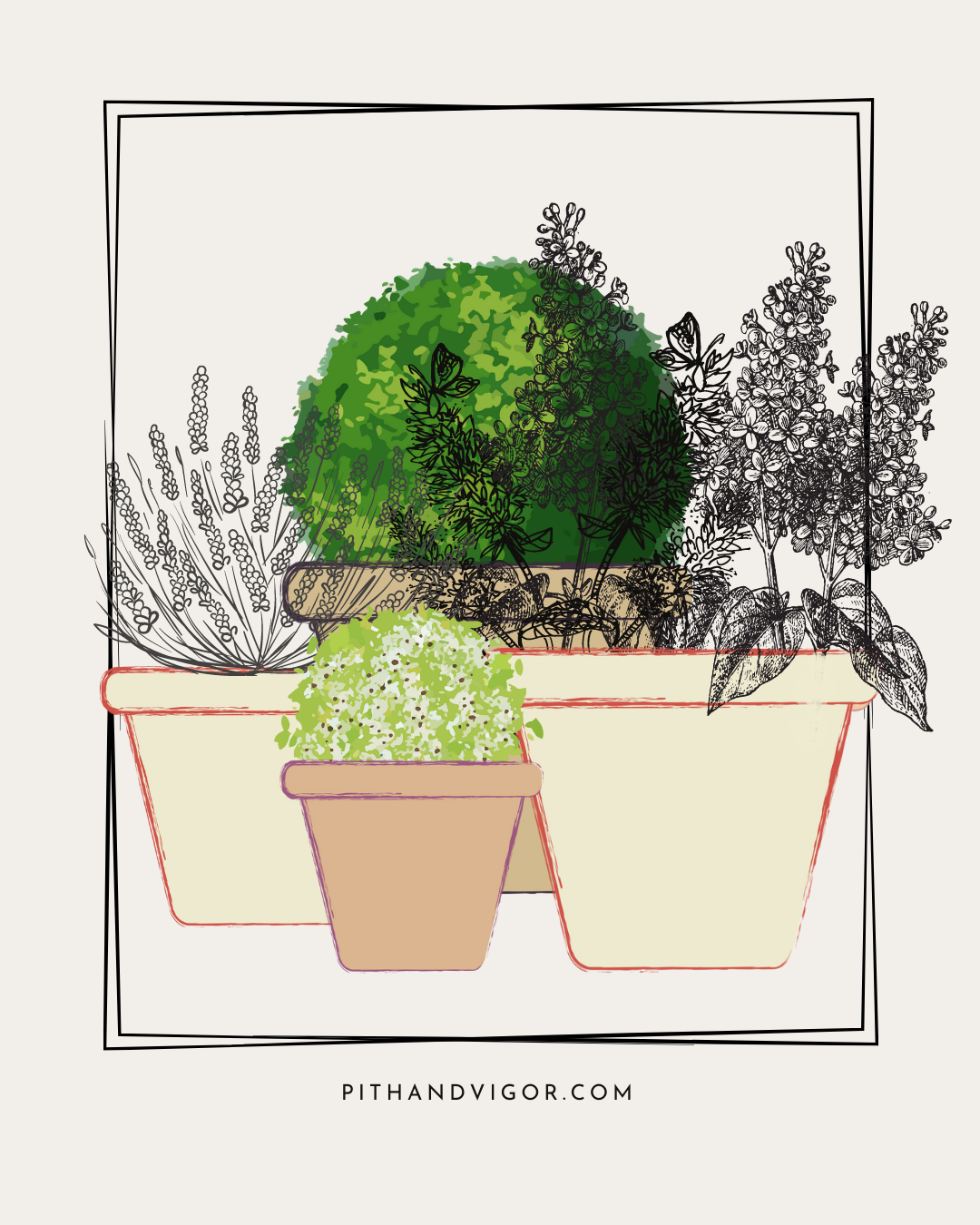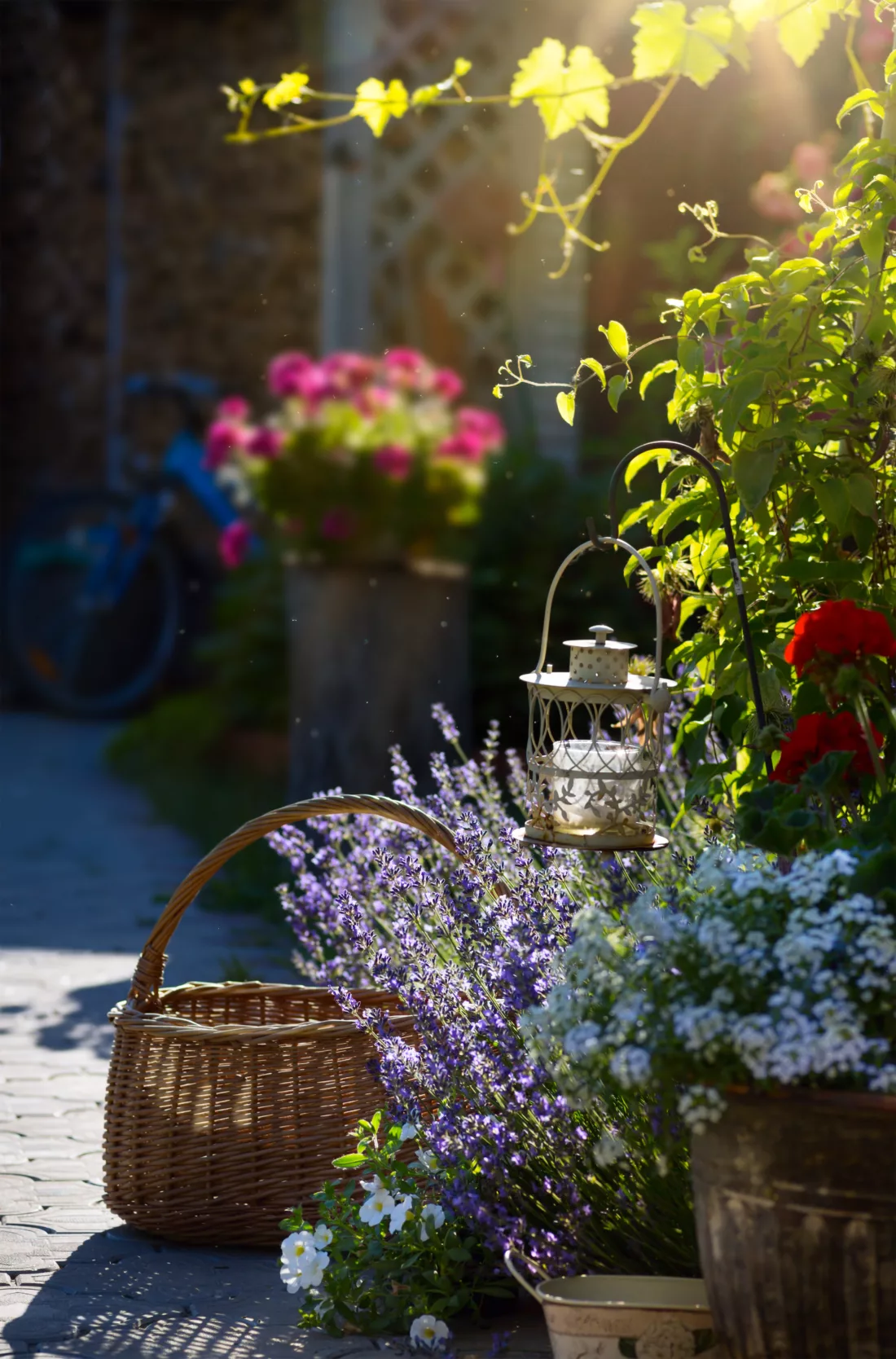After 20+ years of making all sorts of gardens for myself and my clients – I have opinions – especially when it comes to container-based gardens. I’m not a fan of the mixed container garden, the thriller, filler, spiller mantra, or any other formula for making what often amounts to extremely short-lived floral arrangements. It’s not that those ideas don’t work – it is just too common for mixed container designs to last only slightly longer than cut flowers.
Why don’t they work well? Because plants grow at different rates – they don’t stay put. They compete for resources and have unique needs (in regard to water, light, and nutrients). These types of groupings are tricky to balance over the long term. To be successful requires a lot of plant knowledge or sheer dumb luck. And good luck creating something that endures through a whole gardening season.
I take a slightly different approach. One plant, one container. It gives visual impact to the plants and an opportunity for you to grow each type of plant well. It allows you to arrange and rearrange all season long. If you’ve struggled with container gardening – read on…
These forty container garden ideas should help you find a container garden design strategy that works.

40 ideas for making better flower pot designs and cool container gardens
- Start with the base. Use pots that have visual consistency with all the other pots you are using around your garden. Standardize something about the planting vessels – for example, material (terracotta, metal, corten, etc), color, shape, or texture. You don’t have to make everything match – just match one thing.
- The soil matters more than anything else – use the absolute best you can buy (or mix it yourself from good ingredients – this is not, however, necessary, so why overcomplicate?).
- Plan to change the soil annually – potting soil resources get used up over time. Because it is isolated in a container, there are no natural systems to restore it.
- That said – if you have big pots with annuals – you can get away with just changing out only the top 4-5 inches annually (and you can save a full change out for every other year).
- The thriller – filler – spiller formula is challenging – it requires lots of design sense and plant knowledge to get it right. There are easier ways to make amazing container gardens (check out this post with exciting spring planters).
- Also, you should not take any advice as gospel just because it rhymes.
- Small pots dry out faster than big pots. Upsize to make your life easier.
- But don’t go too big (over 16ish inches in diameter) – because then you can’t easily re-arrange (which is the best part of container gardening!)
- Plan ahead for irrigation – especially if you struggle to do things daily (like exercise, feed yourself healthy food, or whatever other good habit you wish you had).
- Pots typically need daily watering. Set yourself up for success by thinking through a backup plan (erm…automated irrigation).
- Painted pots and plastic pots will not dry out as fast as natural pots (terra-cotta, cement, stone), fabric, or basket-style planters.
- You know how a freshly painted wall will make everything around it look bad? Plastic pots are the same – they degrade the look of everything around them.
- Cover plastic pots by putting them inside slightly bigger natural pots or baskets. Hide plastic pots by setting nicer ones in front and around them.
- Don’t feel like you always need to re-pot. Sometimes, putting a whole nursery pot (container and all) in a bigger soil-filled container – (just don’t take the plant out of its grow pot) with soil and other whole pots is a rational and reasonable thing to do – it makes it easier to swap out later.
- At least half of the visual appeal of a collected container garden are the pots (>>>get pot and plants pairing ideas). So don’t let yourself down with the design of this part.
- Pick your pot as much on aesthetics as function. (Size, shape and material matter not only visually, but these characteristics also impact the health of the plants you grow in them)
- All flower pots need drainage holes – unless you are planting a containerized water garden.
- Potting soil needs to have three things. Available nutrients, good structure (i.e., not heavy, it should feel light and fluffy), and an ability to hold water.
- One plant one pot allows for endless exciting design options. Don’t underestimate the permutations of this simple formula.
- Add interest by grouping multiple pots together.
- Group at least three pots. I prefer a minimum of 15. (you heard me)
- Use shelves, benches or stools to make a container display more interesting with height variation.
- Repeat, repeat, repeat.
- Limit your palette to 3 or fewer bloom colors to achieve a cohesive arrangement.
- Always have a colored foliage accent. (Chartreuse or Purple foliage are my favorites)
- Don’t limit your potted garden choices to just annuals.
- If you use trees, shrubs, and perennials in containers, you can still plant them in the ground later.
- Sometimes I think of my potted gardens as a plant lab, where I get to test things out and get to know them a little better before before finding a permanent home.
- A vine can be a great potted plant – you just need to think of what shape you want it to be and give it a frame.
- Outdoor container gardens are easy to move – take advantage of that and have fun creatively re-imagining and re-arranging them throughout the season.
- Plant enough plants that your container will fill out in 2-3 weeks.
- Plant tags typically list spacing guidelines for 3-5 years (or more) of growth. This is ignorable information.
- Potting soil is not living and you have to manage it like the quiescent substance that it is. Conversely, garden soil is teeming with life, and will, if properly cared for, largely take care of itself.
- Potting soil and garden soil are not interchangeable. Garden soil does not have the drainage, moisture control, aeration, or nutrients needed to successfully grow plants in containers.
- If a plant will be overwintered in the pot, because its roots are above ground, it will not be as hardy as it is in the ground.
- Subtract 1-2 hardiness zones to adjust (i.e. if you are in zone 7, you will have the best luck to over winter plants that are hardy to zone 6 or below).
- To combat this, bring pots into a protected area (garage, basement, etc).
- If you don’t want your pots to potentially expand and contract due to freezing water (you will need to protect them or empty them). This mostly impacts ceramic, terracotta and other porous containers.
- Consider your surroundings – if you are in an urban area, you will have fewer planting design cues from the surrounding nature (and more freedom to plant anything and it will work). In the country you will have more references. Take note of whatever cues you have and work with them – if you don’t your flower pot garden will be jarring in its surroundings.
- Have fun and know the “rules” – so that you can bend and break them effectively.
If you would like to learn more about how to create successful container gardens join me in my annual course – Creating Containers – A Year of Creating Collected Gardens in Pots with Rochelle Greayer.

+comments+